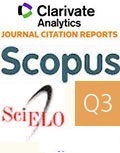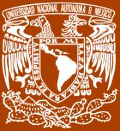|
Boletín de la Sociedad Geológica Mexicana Volumen 76, núm. 2, A211223, 2024 http://dx.doi.org/10.18268/BSGM2024v76n2a211223
|
 |
Prospección con georradar en las calles de la ciudad de Mérida, Yucatán
Georadar prospection across the streets of the city of Mérida, Yucatán
Jorge Blancas1,*, Luis Barba1, Josep Ligorred2, Agustín Ortiz1, Itzayana Bernal3, Nadia Uriarte4
1 Laboratorio de Prospección Arqueológica, Instituto de Investigaciones Antropológicas, Universidad Nacional Autónoma de México, Ciudad Universitaria, 04510 Coyoacán, CDMX, México.
2 Facultad de Arquitectura, Universidad Autónoma de Yucatán, Exconvento de La Mejorada Calle 50 entre 57 y 59, 9700 Centro de Mérida, Yucatán, México.
3 Facultad de Ingeniería, Universidad Nacional Autónoma de México, Ciudad Universitaria, 04510 Coyoacán, CDMX, México.
4 Escuela Superior de Ingeniería y Arquitectura, Instituto Politécnico Nacional, Unidad Profesional Adolfo López Mateos, 07738 Gustavo A. Madero, CDMX, México.
* Autor para correspondencia:(J. Blancas) This email address is being protected from spambots. You need JavaScript enabled to view it.
Cómo citar este artículo:
Blancas, J., Barba, L., Ligorred, J., Ortiz, A., Bernal, I., Uriarte, N., 2024, Prospección con georradar en las calles de la ciudad de Mérida, Yucatán: Boletín de la Sociedad Geológica Mexicana, 76 (2), A211223. http://dx.doi.org/10.18268/BSGM2024v76n2a211223
Manuscrito recibido: 12 de septiembre de 2023; manuscrito corregido: 10 de diciembre de 2023; manuscrito aceptado: 20 de diciembre de 2023.
ABSTRACT
The study carried out in different areas of the city of Mérida, Yucatán, has the objectives of locating pre-Hispanic or colonial archaeological remains, register leveled areas from the Mayan times and to verify the existence of karstic areas in the subsoil, among others. For these studies in urban areas, we used ground penetrating radar (GPR), one of the non-invasive geophysical techniques. This technique allows to detect remains below the modern street pavement without interference in urban areas, reducing the need of excavation or other actions that may modify the area to be studied. In the present stage of the project, we selected places where the exploratory lines performed in previous seasons suggested the possibility of having archaeological remains below the city streets.
We chose two zones where the bibliographic research indicates the existence of large platforms that were part of the T’Ho Mayan city, in another zone we verify the existence of a sculpture monument, and we also studied an archaeological park in the outskirts of the city. Most results confirmed the hypothesis, so we found extensive horizontal reflections interpreted as ancient leveling in the places where the platforms could be. In the Kambul zone, we found a clear hyperbolic reflection interpreted as a buried, large stone. In Chen Hó archaeological park, we found some cultural features inside the mounds. Besides the cultural features, we found many deep anomalies, interpreted as karstic zones, which are relevant because in the future they might reach the surface.
Keywords: gpr, urban areas, archaeological remains, karstic areas.

